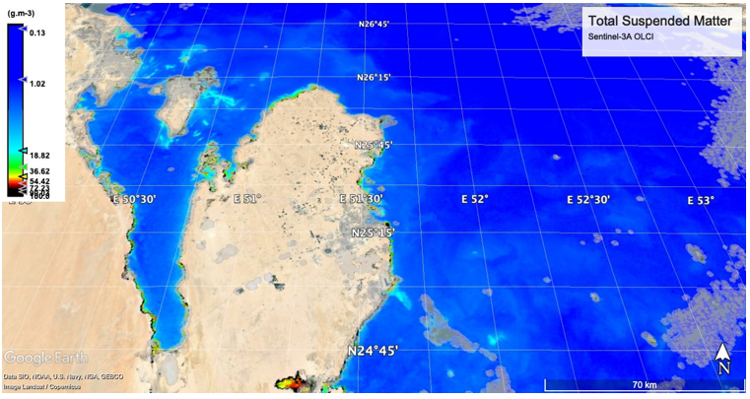
Red Tide Algae Detection
Red Tide Algae and Sargassum seaweed can be identified through satellite monitoring. KSAT is developing the world’s first Red Tide Algae Detection Service.
Algae, in many forms, poses a direct risk to conventional fishing, aquaculture, tourism and infrastructure. For example, in 2020 a massive algae outbreak in Norway accounted for around NOK 3 billion in revenue and job losses in the fishing and aquaculture industries.
Fortunately, Red Tide Algae and Sargassum seaweed can now be identified through satellite monitoring and in the coming years, new hyperspectral satellites will enable other Harmful Algae Blooms (HABs) and types of seaweed, to be detected as well.
Key Facts about detecting Red Tide Algae with existing satellite assets:
- In most areas of the world, the required satellite coverage is available 23-24 days of each month.
- Analysis starts with water quality parameters: Chlrorophyll-A, Total Suspended Matter, Colored Dissolved Organic Matter and Light Extinction Coefficient (Chl-a, CDOM, TSM and Kd).
- Then the Red Index and finally the full Red Tide Algae Detection Report can be derived algorithmically.


Detection of Red Tide Algae, and when hyperspectral satellite capacity allows, other types of HABs, could be of interest to:
-
Regulators or environmental groups wanting to monitor, track and identify the source of Red Tide Algae.
-
Operators of fisheries and aquaculture facilities who are impacted by Red Tide Algae outbreaks and can take action to protect their stocks based on KSAT’s reporting.
-
Operators of key infrastructure, such as desalinization plants, which would be negatively impacted by Red Tide Algae ingestion.
-
Stakeholders of coastal tourism infrastructure in Red Tide Algae prone areas.
